UPDATING KEY TEXTILE PROVISIONS IN NAFTA
Making NAFTA work better for U.S. textile manufacturers
ISSUE:
In talks launched last year, the Trump administration initiated a renegotiation of the North America Free Trade Agreement (NAFTA) with the aim of improving the deal to better serve American manufacturing interests. USIFI and NFI support making common sense updates to this 24-year-old agreement that meet the President’s stated goal of bringing more employment, production, and investment back to the U.S. in manufacturing sectors such as textiles.
Eliminate TPL Giveaways to China
The standard origin rule for textiles in nearly all U.S. free trade agreements (FTAs) is the yarn forward rule, which requires the production of yarn and every ensuing manufacturing stage of a textile or apparel product to be done in the FTA region. Yarn forward was originally devised under NAFTA and is the accepted rule for the domestic textile industry because it reserves key benefits for producers within the FTA partner countries and is easier to enforce than alternatives like value-based rules.
Although most U.S. FTAs are built on a yarn forward structure, exceptions to the basic rule exist in many agreements that shift business away from U.S. producers to non-FTA parties, namely China. These yarn forward loopholes take many forms, one of the most egregious being tariff preference levels (TPLs). TPLs allow for a specific quantity of product to be shipped duty free among free trade partner countries although the components are sourced from third-party countries.
Under NAFTA, Mexico and Canada combined are permitted to ship over 235 million square meter equivalents annually to the U.S. duty free of certain apparel, fabrics, and other textile articles containing third-party inputs. An additional allowance is made for nearly 13 million kilograms of yarns containing third-party fibers. These and other loopholes unnecessarily drive textile production and employment out of the NAFTA region and should be eliminated.
Pocketing, Sewing Thread, and Narrow Elastics
There is a vibrant U.S. production base for “secondary” textile components like pocketing fabric, sewing thread, and narrow elastic fabric that is not reflected in NAFTA’s origin rules. Despite being commercially available in the U.S. and broader NAFTA region, secondary inputs may be sourced from any country and the finished garment or home textile may still qualify for NAFTA duty-free status. This loophole grants non-NAFTA producers in China and elsewhere the same lucrative access to our market and standing in the NAFTA origin rules as U.S. producers of these component materials.
This oversight was later corrected in our other major Western Hemispheric trade agreement, the Dominican Republic-Central America FTA (CAFTA-DR). The CAFTA-DR clearly stipulates that regional pocketing, sewing thread, and narrow elastics must be used. Bringing NAFTA in line with CAFTA-DR vis-à- vis these components would properly acknowledge their availability from U.S. producers and benefit production and jobs by stimulating more U.S. value-add in NAFTA goods.
Close the Kissell Amendment Loophole
The Kissell Amendment is a Berry Amendment-like, Buy American law for textiles that applies to the Department of Homeland Security (DHS). Like Berry under the Department of Defense, Kissell requires 100% U.S. content with very limited exceptions. In practice, however, DHS only applies Kissell to purchases by the Coast Guard and Transportation Security Administration (TSA) because of U.S. commitments made under the WTO’s Agreement on Government Procurement (GPA).
Regarding TSA procurement, however, Kissell has a problematic loophole that was created when the U.S. government chose not to notify Mexico and Canada under the terms of NAFTA that it was reserving TSA from the GPA. Thus, the United States has taken the position that Mexico and Canada are acceptable as U.S. sources under Kissell. This allows for cumulation (i.e. sharing of components) among the United States, Mexico, and Canada in meeting the content requirements of the Kissell Amendment for TSA contracts. As a result, assembly can take place in any of the three countries from components made in any of the three.
The TSA NAFTA loophole translates to a significant weakening of U.S. Buy American statutes. According to government data, DHS spent $24 million on clothing and textiles for TSA in FY2016.
Improve Customs Enforcement
Over the past 30 years, there has been a systematic deemphasis of commercial fraud enforcement at U.S. Customs and Border Protection (CBP). CBP suffers from a lack of resources and focus, made even more critical by increased trade volumes and new trade agreements implemented during this timeframe. As a result, the benefits of our FTAs have been siphoned off by third-party countries and importers willing and able to circumvent U.S. trade laws.
To maximize the benefits to U.S. manufacturers, workers, and our FTA partners, NAFTA must be updated to foster increased emphasis on customs enforcement. To enable this, Congress should also work to increase resources at CBP to support more effective enforcement of U.S. trade laws and duty assessments. Improving enforcement not only pays for itself, it generates increased revenues.
ACTION REQUESTS:
- Strongly support making common sense improvements to NAFTA that help create a level playing field for American textile manufacturers and workers.
- Urge U.S. negotiators to insist on:
- ending TPL handouts to China
- bringing NAFTA in line with CAFTA-DR rules for secondary components;
- closing the loophole that allows Mexico and Canada to qualify as “Buy American;” and o taking concrete steps to tighten up customs enforcement
 TEXTILES.ORG
TEXTILES.ORG 


